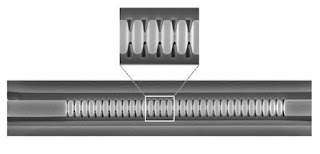 |
| Electron microscope image of the optical cavity used to make a quantum memory. Each segment in the cavity has a vertical dimension of about 690 nm (Courtesy: Tian Zhong et al / Science) |
All Posts (6510)
TERROR ON TELDERAN
SYNOPSIS: In 1990,
SYNOPSIS: In 1990,
After breaking away from the Planetary Alliance the planet Otar finds it’s self on the brink of ruin. In a desperate move, their leader Rotart makes a foolish attempt to terra form the planet Telderan so that he may claim it and relocate the Otarian race. Ancient oracles have been warning Alliance leaders for years that such an attempt would be made and that it would have catastrophic results for planet Earth billions of miles away. Rayna, High Ruler of the Southern Quadrant of Lazon and J’lore Chief Council of Earth’s Guardians have been lifelong friends. Although Earth Guardians are considered outlaws by the government Rayna sympathizes with their cause to save the human race. Earth’s Guardians is also aware of the impending disaster for earth but Rayna confirms it. Taz, son of the ruthless dictator of Otar is dispatched to clear Telderan of the handful of inhabitants so that the terra forming process can begin. His harsh and heavy handed ways do not go down well with the settlers and his father's confrontation with leaders of the Planetary Alliance does not fair any better. Only time will tell if the Planetary Alliance’s oracles were right.
The Luna Press has an open CFP for "The Evolution of African Fantasy and Science Fiction". in their Academia Lunare imprint: https://www.lunapresspublishing.com/single-post/2017/05/01/Call-for-Papers-2017-The-Evolution-of-African-Fantasy-and-Science-Fiction
The editors would be very happy to include papers that look at African fantasy or science fiction outside of Africa.
The mind space, similar to toothpaste. In the tube it can be squeezed and mangled within the confines of it's container. Remove the cap and out it comes but according to a little coaxing and the now unblocked orifice. The point is managing the next logical outcome. Then envisioning how far you can take that outcome. I've have seen geodesic domes made of Saran Wrap, bubble wrap and Plexiglas but I wouldn't live in any of them. The mind can conceive so much. Practicality is often based on economics and availability even before you get to durability and aesthetics. The famous Frank Lloyd Wright while on the cutting edge of style and grace made an eventually leaky dwelling because the materials available didn't perform as planned (pushed too far). I've seen cargo container home designers give up and coin the industrial/shipyard look as cool, trendy, hip, NOT! Think that's bad try the military look, not to diss the military, after all they did glamorize the one thing that works well, 'camouflage'. In architecture it is called facades. In fashion it is costume and makeup, in culinary it's substitute and seasoning. Look and feel of one thing while having the structure and substance of something else.....but you know how many Naugahydes it takes to simulate deep Corinthian leather? A full 10 gallon pail (that's hat in Texas).
Yes, this is an exercise in design, the next logical assumption. Every step wither back, to the side or to jump ahead leads somewhere. Strip the rippled walls off a cargo container and cover the frame in glass. Double the glass and fill the gap with Styrofoam beads, coat with Ray-ban, electric phase change salts, roll down screens. Curve the glass into a quonset covering. You can seal this or make it slide like a pool cover. Under the quonset the space is open, forget the horse barn and barrack look. I've seen private jets that have near the same shaped space so plush it's like Star Trek. The airship or future blimp has sliding vista windows and roofs, a strolling isle like a fashion show walkway, accommodations, build-ins, no wasted space, and no clutter, an observation deck with a bar, sleeping state rooms. Talk about leisure cruises.
Young folks are living in smaller spaces so they can afford the luxury. It is a mind-space trade off. JUST THINK, take "da lux" off your SUV and outfit your tiny house, haul it with a beater truck and look like stepping off a "Lost in Space" episode before Dr. Smith becomes Mr. Smith, the real one in the Matrix. All Smiths find out, this is why black Smiths live off world, "Nubian I think". Morpheus is one of the Jones boys but "The Rock" is a Johnson like me (no relation and yet I wonder).
One of my favorite futurist artist Syd Mead talked about buildable futures. This caused a question to linger in my head for ever. What will the future look like and how will we of browness be involved. Yeah we buy a lot of pre-owned dwellings and do lots of apartments and condos and if fortune comes to us the "big House". I watch the programs about the tiny house movement and marvel at young white folk giving up the notion of a permanent foundation based house for one that is somewhat transportable. I laugh, some struggle to put everything in it and some like a camp trailer. It's a port-a-potty with a living onsuite.
Oh the serious talk of giving up amenities and paring down possessions, a kind of simple life with less ego and status display of materialism. But my question for us........what if we would do near the same. I say near because I'm not a fan of the gypsy life. But what If we look at some of the considerations of living with less like this. I don't mean living in a hut/shanty/shack like our ancestors, but even with the technology we have today it is still not far from that. Like living in an encampment on a distant planet. How would we build off-grid and still have what we need and do it with style and grace of course. I am not a fan of cargo containers in their raw state, junk yards (eclectic devastation art), apocalyptic futures. I have shown some of my ideas on this site and I think about the possibilities of a material culture that might come out of Afrofuturism besides body adornment, hero cosplay and sound art (love it). Like the tiny house adventurers would some of us make the plunge with the added twist of an Afrofuturist motif. Sort of a living experiment. It is a catalyst move for sure but move on the line of Space 1999 than the Bootsy Collins invasion. The point is living in the future today. Yes, I've got my vision of that future and you got yours. But how does this future materialize beyond todays mind-space? What if the tiny house were a bubble or the hull of a large plane, how would you live in it? the same?
Topics: Commentary, Computer Science, Consumer Electronics, Robotics
Robot makers slow to address cyber risk: researchers, Jeremy Wagstaff, Reuters Science
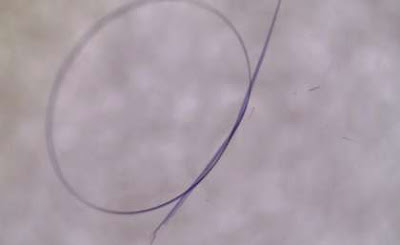 |
| Credit: University of Queensland |
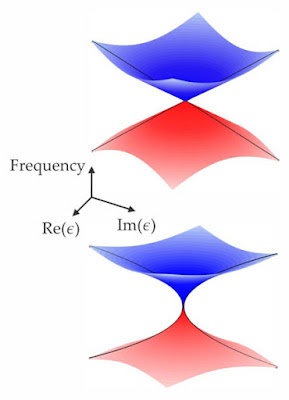 |
| Image Source: Link below |
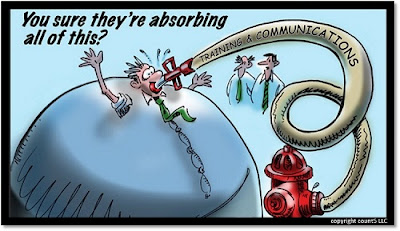 |
| Image Source: An article on LinkedIn by Linda Morales |
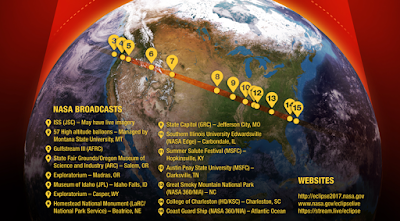 |
| Image Source: NASA.gov |
Topics: Eclipse, NASA, Space, Space Exploration
Eclipse Live Stream
NASA TV’s - Eclipse Across America: Through the Eyes of NASA
Related links:
Eclipse Live, NASA.gov
Total Solar Eclipse 2017: Here Are the Best Live (Video) Streams, Sarah Lewin, Space.com
PRESS RELEASE
Total Solar Eclipse African American Style: Black Suns: An Astrophysics Adventure
Black Suns: An Astrophysics Adventure, a documentary about chasing eclipses and science dreams, chronicles the lives of two globe-trotting astrophysicists, Dr. Alphonse Sterling and Dr. Hakeem Oluseyi, as they follow/document the two solar eclipses that occurred in 2012. The film is hosted by award-winning cultural astronomer Dr. Jarita Holbrook. Black Suns premiered on Friday, June 9 at the 7th Annual Art of Brooklyn Film Festival, where it won the Jury Prize. There will be a screening at the AAS HEAD meeting in Sun Valley on Sunday, August 20. It will be screening August 26 @ 13:40 at the Bronzelens Film Festival in Atlanta (Auburn Avenue Research Library on African American Culture and History 101 Auburn Ave NE).
For this eclipse weekend we are offering a preview streaming special for $3.99 on Vimeo (https://vimeo.com/ondemand/blacksunseclipse).
Dr. Alphonse Sterling (http://solarscience.msfc.nasa.gov/people/sterling/) of the NASA Marshall Space Flight Center, currently stationed in Japan: a man who had early success in the U.S., but left his home country to further cultivate his wide-ranging interests.
Dr. Hakeem Oluseyi (https://www.aps.org/careers/physicists/profiles/oluseyi.cfm) of the Physics & Space Sciences department at the Florida Institute of Technology: a scientist who beat all the odds -- poverty, homelessness, single parent, poor early education, gang warfare -- to get to where he is today.
Dr. Jarita C Holbrook (https://www.facebook.com/drjaritaholbrook/)
Scientist and cultural anthropologist, Dr. Holbrook’s films include “Hubble’s Diverse Universe,” (HDU, exec prod/interviewer/editor, 2010) http://www.HDUmovie.com and "The Micro-X Rocket Project" (exec prod/interviewer/co-director, in production).
Black Suns explores how and why the two men became scientists, their opposing paths and personalities, their struggles as minorities in a STEM (Science, Technology, Engineering, Mathematics) field, and their noteworthy accomplishments to date.
Why Is Black Suns Important?
Black Suns is for a general audience, but it is being created for our future – America’s children – especially those underserved communities whose math and science talents might be overlooked. The two scientists personal unveilings will intrigue and engage young people in these communities. Further, Alphonse and Hakeem exhibit different styles and personalities, dispelling the belief that only one type of person can become a successful scientist. Therefore, by following the two astrophysicists as they chase the two eclipses, it is the filmmakers’ goal to motivate young people so that they seek out their own incredible scientific journeys.
Follow the adventures on:
Twitter @blacksunsdoc
And on Facebook blacksunsdoc/
 |
| Image Source: See link [2] below |
Topics: Astronomy, Astrophysics, Eclipse, Moon, NASA
1. Amazon Is Warning People Not To Use Some Solar Eclipse Glasses That Were Sold On The Site, Leticia Miranda, consumer affairs reporter BuzzFeed News
2. Reputable Vendors of Solar Filters & Viewers, Solar Eclipse 2017, NASA
N.K. Jemisin’s ‘The Fifth Season’ Book To Be Developed As TV Series At TNT!
Now Mr. Hayashi can't complain about there being no other famous black creatives than Delany and Butler.
http://deadline.com/2017/08/nk-jemisin-the-fifth-season-book-developed-tv-series-tnt-1202150542/
Now who says diversity doesn't sell?! If some yesteryear agent says that, throw this article in their face and say "Are you sure? Now get me TNT's president and NO I won't hold!"
Of course, this assumes TNT won't screw this up like they did the TFTC revival.
 |
| Image Source: European Society of International Law, Vol 4, Issue 1 Editorial board: Anne van Aaken (editor-in-chief), Jutta Brunnée, Başak Çali, Jan Klabbers |
My name is Kenneth James, and I am currently editing the personal journals of the renowned SF writer Samuel R. Delany in a multivolume series for Wesleyan University Press. The first volume, In Search of Silence -- which collects Delany's journals from the 1960s -- has, since its publication earlier this year, received very positive reviews from such venues as The New Republic, The Gay & Lesbian Review, and the Barnes & Noble column by SF critic Paul Di Filippo. Here are links to two of these (the G & L Review article is unfortunately behind a paywall):
Please help spread the word about this campaign!
| Image of the 3-D droplet bioprinter, developed by the Bayley Research Group at Oxford, producing mm-sized tissues Credit: Sam Olof/ Alexander Graham |
The driving force behind this comic book gaming adventure is the Black experience. Their conflicting hopes, dreams and visions of a better future and a brighter tomorrow are dramatized in a scintillating voyage between comic books and video games. Move over pop culture dinosaurs, Ultimate Voyages promises to restore its readers, gamers and adventurers to their rightful place. No more sitting in the balconies or at the back of the bus. Its novelty is in its reimagining the world or the United States, for that matter, as the home of the free and land of the slave. It delivers a stretch of storylines and character building levels that are fun and engaging for those brave enough to enter its dimension. The story ventures out with Ultimate Voyages through Language and History, followed by its sequel The UHURU Initiative: Revenge of the White Gaud, then drops you in the driver’s seat in a World of Ultimatums, pulling you back in with the yet to be released title Courage to Succeed. Created and produced by a private individual fed up with the lack of inclusion and connection he felt with popular culture.
